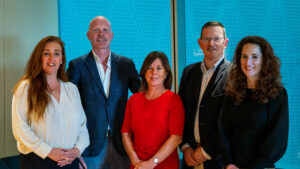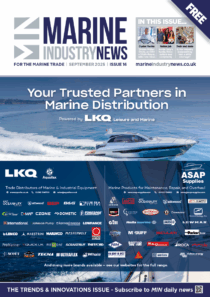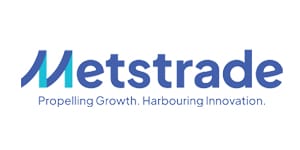Employee-owned marinas: Emsworth MD talks about new business model
 Emsworth Yacht Harbour. Image courtesy of Compass Aerial Photography.
Emsworth Yacht Harbour. Image courtesy of Compass Aerial Photography.
In April 2024, Marine Industry News reported that Emsworth Yacht Harbour had sold a controlling stake to an employee ownership trust (EOT). This, the Emsworth team believes, makes it one of the first employee-owned marinas in the UK.
As part of the move, Tom Marfleet took over the role of managing director with Alison Wakelin moving to a non-executive director role.
Marfleet says the process took around two years from initial conversations about succession plans and exploring various other options before settling on the idea of employee ownership.

“Once we decided that it was feasible it took a year to make structural changes to the business in order to satisfy the HMRC rules on being able to use the EOT scheme,” he says.
“Communication is one of the key things to get right for any business thinking of taking a similar route,” continues Marfleet. “It is a long process and you do not want to announce your plans too early as there are inevitable hurdles to overcome that will slow the process down. If you announce too early then you may lose the confidence of the people you are trying to bring along with you. Conversely, if you leave your announcements until too late then there is a lot of work to be done to explain what is going on. Any business restructure is a complicated transaction to try and communicate to people but employee ownership is still fairly unusual and so that whole aspect has to be explained fully before you can move on to anything else.”
In operation since 1965, Emsworth Yacht Harbour (EYH) is located on the UK’s south coast and its unique succession plan has helped protect its independence. Acquired by the Wakelin family in the 1990s, Alison Wakelin has held the role of managing director (MD) since 2006. Following the sale this year an EOT now holds 80 per cent of the company’s shares on behalf of its 12 employees, with members of the Wakelin family retaining the remaining 20 per cent.
In a statement, Wakelin said: “As a family, we wanted to find a succession plan that would allow EYH to stay as an independent marina for the foreseeable future. Becoming an employee-owned business presented a perfect opportunity to safeguard the future of our community.”
The “John Lewis model”
The road to succession, however, was not without its hurdles. “It is a particularly complicated area of tax law and we would never have been able to do it without help from outside professional services guiding us,” Marfleet continues.
One of the biggest challenges was ensuring all the criteria set out by HMRC, for eligibility for the scheme, was satisfied. EYH’s move to employee ownership was facilitated by a team of advisers from Blake Morgan LLP and Menzies LLP with Andrew Harrison of Co-ownership Solutions helping with communications to the employees and other stakeholders.
“A trust (and trust company) has been set up which sits above the original companies in the group. The trust company owns the shares in the other group companies on behalf of the employees, so there is no direct ownership. It is very similar to the John Lewis model. If you are an employee of the company you are an employee owner but when you leave the company you cease to have any benefit.”
The governance of the trust is set out in a founding document that was drawn up by Emsworth Marina’s lawyers to set out the purpose, the role of the trust and the rules that the trust must abide by. There are three trustees who sit on a board that ensure the governance of the trust and ultimately, the rest of the group companies.
“The shares have been paid for by an IOU from the trust to the vendors and the debt will be repaid over ten or so years out of retained earnings,” says Marfleet.
Employee benefits
Benefits for the employees include a tax-free bonus which is payable annually (providing good financial performance by the companies is achieved). Employees are also owners and will have a much greater say in the way the companies are run.
“Once the initial debt has been repaid and the company has achieved financial freedom things get really interesting as there will be some spare profits sloshing around that would normally be paid in dividends to shareholders. We could decide to do that and share profits with the employees at the time, we could significantly increase salaries, we could invest in a pension fund. We could even look to expand and buy another marina. All of that is a long way away but the potential to really do something different and meaningful for the employees and the community is very exciting,” says Marfleet.
“After six months, I would say that our biggest challenge is getting everyone out of the mindset of existing in a traditional hierarchical shareholder ownership structure. Most employee owners have only ever know that type of structure and getting people to think about their stake in the company more broadly beyond the work they do on a daily basis is taking some time. We are putting some procedures into action that will allow all staff members to be able to have their say in the way the company is run and hopefully begin to have more conversations about ‘our company’.”
As yet, no other marinas have contacted Emsworth about their route to employee ownership but the team believes it could be a worthwhile avenue for other marina organisations to consider.
“I hope that other independent marinas will consider employee ownership as part of their succession planning. It is not necessarily the right option for all companies and all independent owners. It is not as simple or easy as a straight forward sale to a third party but it is an option and comes with a whole slew of great benefits to the employees and the wider community,” says Marfleet.
Safeguard and succession
A big benefit, says the team is that the EOT helps protect the independence of the marina.
Marfleet says: “The previous owners of the company, the Wakelin family – and in particular the previous managing director, Alison – spent 30 years building the marina as an alternative to the big group marinas. Our USP is that we are independent, flexible and approachable. If you want to talk to our senior managers you just have to pick up the phone and call the office. Boat ownership is not one size fits all and we like to think we provide a service that reflects that.
“One of the unintentional consequences of driving the business in this direction has been the flourishing of a community of customers, tenants, contractors and local residents. The community at Emsworth is quite unique, and in a world of increasing disconnection between people and communities it is something that needs to be cherished and preserved.”
While the team at Emsworth Yacht Harbour champions the marina’s independence and customer connection, Marfleet doesn’t look negatively upon the larger group marinas in the marine industry, acknowledging benefits on both sides of the fence. “There is space in the marketplace for independents and group marinas and both come with their positives and negatives for operators and for customers.”










